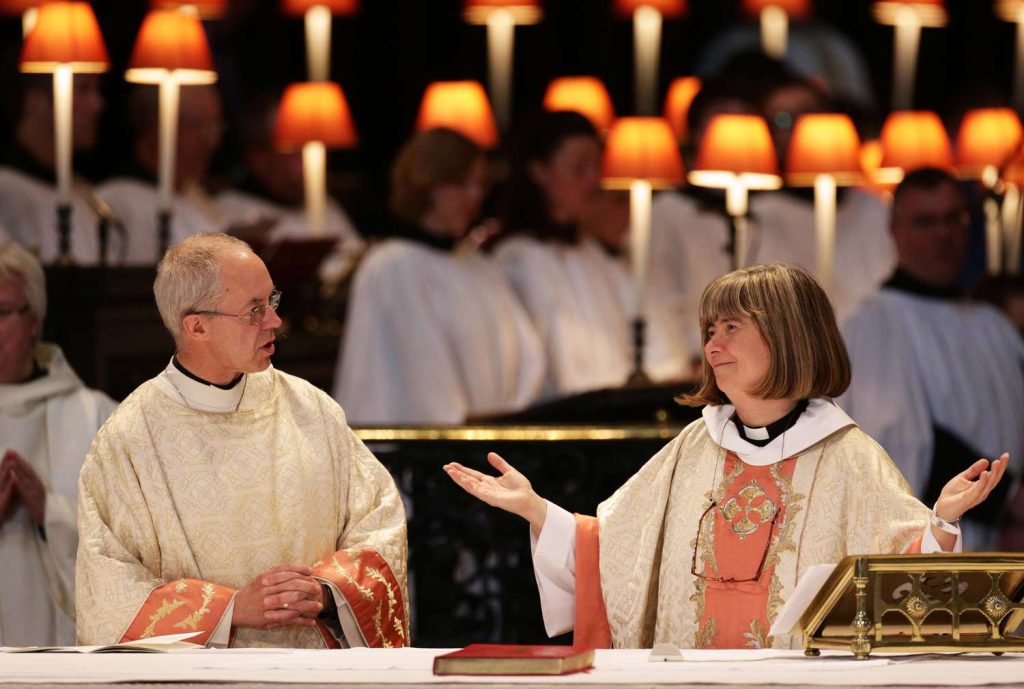Unveiling the Key Disparities: A Comprehensive Analysis of the Principal Distinctions Between Anglicanism and Catholicism
Anglicanism and Catholicism are two branches of Christianity that share many similarities but also have significant differences in their beliefs and practices. While both traditions trace their roots back to the early Christian Church, they have diverged in key areas of leadership, Eucharist, priesthood, and other theological teachings.

Leadership
One of the primary differences between Anglicanism and Catholicism lies in their recognition of leadership. Anglicans are part of a “communion” of churches and do not have a central authority. The Archbishop of Canterbury is considered the “first among equals” and serves as a symbolic figurehead. Additionally, the English monarch retains a symbolic role in the Anglican tradition.
On the other hand, Catholics firmly uphold the authority of the pope, who is recognized as the successor of St. Peter. The pope serves as the supreme head of the Catholic Church and has the final authority in matters of doctrine and governance.
Eucharist

The beliefs surrounding the Eucharist, or Holy Communion, also differ between Anglicanism and Catholicism. While both traditions use similar terminology, they hold divergent views on the nature of the sacrament.
The Catholic Church teaches the dogma of transubstantiation, which asserts that during the consecration of the bread and wine, the substances of the elements are changed entirely into the body and blood of Christ. According to the Catechism of the Catholic Church, transubstantiation occurs, and “the appearances of bread and wine remain, but not their substance.”
In contrast, Anglicans have historically rejected transubstantiation. While there is a diversity of beliefs within Anglicanism, the general consensus is that the bread and wine are spiritually, rather than substantially, changed into the body and blood of Christ. The focus is on the spiritual aspect of the Eucharist, and there is no adoration of the host as in Catholicism.
Priesthood

Another significant difference between Anglicanism and Catholicism pertains to the priesthood. While both traditions have ordained clergy, their beliefs about who can be ordained differ.
Many Anglican churches are open to both men and women being ordained as priests. This inclusive approach to the priesthood reflects the Anglican commitment to gender equality and the belief that all baptized Christians can serve in leadership roles within the church.
In contrast, the Catholic Church maintains that only men can receive the sacrament of Holy Orders. The priesthood is seen as a continuation of the apostolic ministry, with bishops tracing their authority back to the apostles through the laying on of hands.
Other Differences

Beyond these key areas, there are various other differences between Anglicanism and Catholicism. These differences can include teachings on divorce and marriage, interpretations of scripture, views on moral issues, and liturgical practices.
Anglicanism allows for a broader range of interpretations on many theological and moral issues, leading to greater diversity of beliefs within the tradition. This diversity can manifest in different approaches to social issues, such as same-sex marriage and the role of women in the church.

Catholicism, on the other hand, maintains a more centralized and uniform approach to doctrine and moral teachings. The Catholic Church has a hierarchical structure with clear guidelines on matters such as divorce, contraception, and abortion.
Conclusion
In summary, Anglicanism and Catholicism have both similarities and differences that stem from their shared Christian heritage. The primary differences lie in their understanding of leadership, the nature of the Eucharist, and the eligibility for priesthood. These divergences, along with various other theological and moral teachings, contribute to the distinct identities of Anglicanism and Catholicism within the broader Christian tradition.
